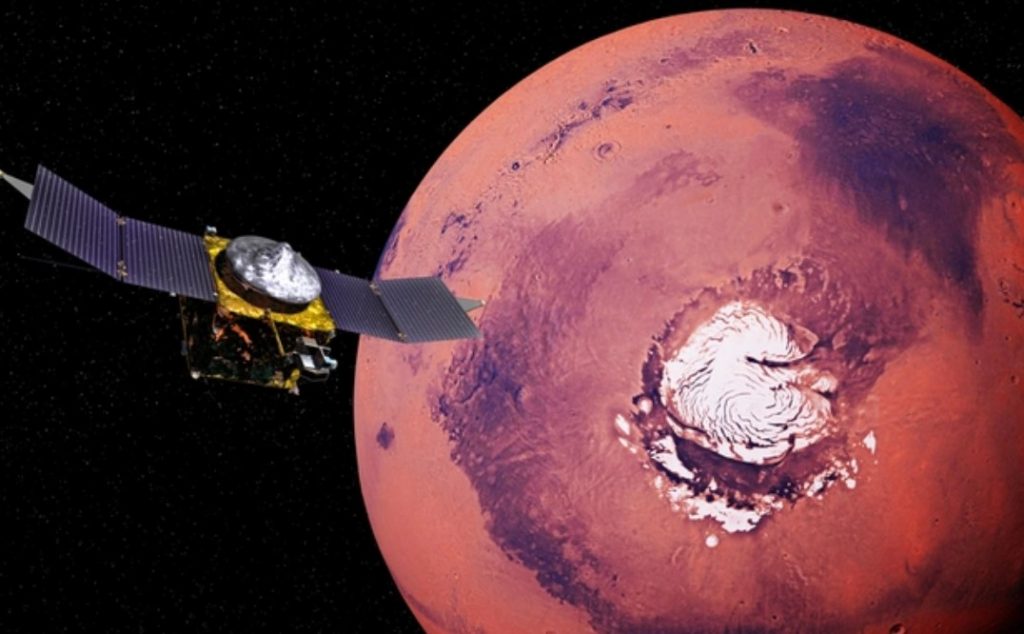Since the first moon landing , the dream of scientists has been to put a human being on the surface of Mars. This mission, which at first seemed like a titanic and science fiction task, currently doesn’t sound so far-fetched.
NASA aims to bring an American to the surface of the Red Planet as soon as possible, taking the 2030s as a limit.
On the other hand, other space agencies such as ESA (European Space Agency), JAXA (Japanese Space Agency), ROSCOSMOS (Russian Federal Space Agency) and CNSA (National Chinese Space Administration) invest millions of dollars to achieve this same goal.
Something particular in this that we can call as ‘the second space race’ is the participation of the private initiative with its own projects. Large companies such as Space X , multimilloranio Elon Musk and Virgin Galactic are making great efforts to beat government agencies and bring tourists to the neighboring planet.
Mexico to the conquest of Mars
Our country is no stranger to efforts to reach the Red Planet. For several years, the Mars Society , a non-profit institution dedicated to the study of Mars, has carried out similar missions in deserts in Mexico and the United States.
Mexican engineers participate in these tests, among which Danton Bazaldua, Juan Mariscal and Tania Robles stand out. These experts perform simulations of Martian missions, where they learn to do everything necessary to survive in such an important mission.
Also, the Mars Society has served as inspiration and support for the so- called Ares Plan, a project focused on covering all the needs to achieve human exploration on Mars. This development plan is a joint effort of the Popular Autonomous University of Veracruz, the Center for Atmospheric and Ecological Research and Aviastar Inc.
According to an article published in the magazine CienciaMX , of the Information Agency CONACyT, in the congress ‘Mexico to Mars’ (convened by the Mexican Space Agency) it was revealed that one of the priority projects of the Ares Plan is the development of a support vital for space explorers.
This project consists of a four-module vehicle linked by a cable, which will seek to replicate the Earth’s gravity to protect the health of the crew.
Everything we develop to go to Mars must be applied first on Earth, so that people see the benefits of technological development that will occur and that at the same time will help us raise resources to be a sustainable process,” said Dr. Santiago Flowers.
Continuing with the sustainable systems, it is tried to create a microsystem inside the ship, in which it is possible to carry out processes of recycling of water, air and other nutrients, reason why diverse methods have been reviewed to obtain it.
The above is part of a Mars terraforming project, to create conditions similar to those on Earth and make the first human settlements on the Red Planet sustainable.
One of the great challenges is to build self-sustaining vehicles, that is, to be able to create their own fuel. An example of such vehicles is a “ferry” that will be used to take astronauts from a ship that will be in the orbit of Mars to its surface.
The primary objective of this mission is to train future astronauts so that in the first mission to Mars at least one of the crew is Mexican. There is even the aspiration that the ship they travel in is of national origin.
Regarding this ship, a theoretical design is already being worked on, but the necessary resources to bring it to reality are not yet available. It also works on a drone robot that is capable of flying over the Martian surface, to obtain soil samples.
The Ares Plan is about 12 years old, but due to lack of financial resources it has encountered several complications. Fortunately, it has had the support of private institutions that show interest in the project, in addition to the help received by the Mars Society, ROSCOSMOS and ESA.

